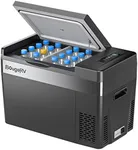Buying Guide for the Best RV Freezers
Choosing the right RV freezer can significantly enhance your travel experience by ensuring you have fresh food and cold drinks on the go. When selecting an RV freezer, it's important to consider various specifications to find the best fit for your needs. Understanding these key specs will help you make an informed decision and ensure that your freezer meets your requirements for capacity, efficiency, and convenience.CapacityCapacity refers to the amount of storage space available inside the freezer, usually measured in liters or cubic feet. This spec is important because it determines how much food and drink you can store. If you travel with a large family or for extended periods, a larger capacity freezer will be beneficial. For solo travelers or short trips, a smaller capacity may suffice. Consider your typical travel habits and the number of people you need to accommodate when choosing the right capacity.
Power SourceRV freezers can be powered by different sources, including 12V DC (direct current), 110V AC (alternating current), or propane. This spec is crucial because it affects where and how you can use the freezer. A 12V DC freezer can be powered by your vehicle's battery, making it ideal for off-grid camping. A 110V AC freezer requires a connection to an electrical outlet, suitable for RV parks with hookups. Propane-powered freezers offer flexibility for long-term off-grid use. Choose a power source that aligns with your travel style and available resources.
Energy EfficiencyEnergy efficiency indicates how much power the freezer consumes to maintain the desired temperature. This spec is important for conserving energy and extending the life of your RV's battery or propane supply. Freezers with higher energy efficiency ratings use less power, which is beneficial for off-grid camping or reducing overall energy costs. Look for models with energy-saving features like thick insulation, efficient compressors, and eco modes. Consider your energy availability and consumption needs when selecting an energy-efficient freezer.
Temperature RangeThe temperature range specifies the minimum and maximum temperatures the freezer can achieve. This spec is important for ensuring your food stays frozen or chilled as needed. Some freezers offer a wide temperature range, allowing them to function as both a refrigerator and a freezer. If you need versatility, choose a model with adjustable temperature settings. Consider the types of food you plan to store and the climate conditions you will encounter to determine the appropriate temperature range for your freezer.
Size and WeightSize and weight refer to the physical dimensions and heaviness of the freezer. This spec is important for fitting the freezer into your RV and ensuring it is easy to transport. Measure the available space in your RV to ensure the freezer will fit comfortably. Lighter models are easier to move and install, which can be beneficial if you frequently rearrange your RV setup. Consider the space constraints and your ability to handle the freezer when choosing the right size and weight.
DurabilityDurability indicates how well the freezer can withstand the rigors of travel and outdoor use. This spec is important for ensuring the freezer lasts through various conditions and rough handling. Look for models made with robust materials, reinforced corners, and secure latches. If you often travel on bumpy roads or in harsh environments, a more durable freezer will be necessary. Consider the typical conditions of your travels and choose a freezer that can endure them.
Noise LevelNoise level refers to the amount of sound the freezer produces while operating. This spec is important for maintaining a quiet and comfortable environment inside your RV. Freezers with lower noise levels are less disruptive, especially during the night. If you are sensitive to noise or plan to sleep near the freezer, look for models with quiet operation features. Consider your noise tolerance and the layout of your RV when selecting a freezer with an appropriate noise level.
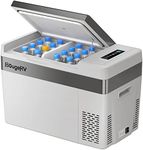
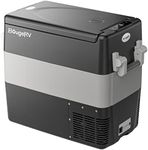
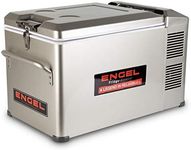
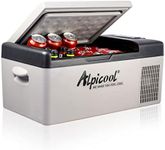

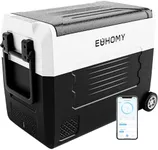

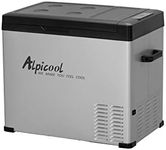




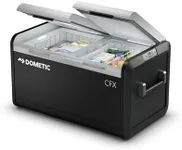
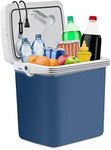
![IMPRESA [4 Pack] Fridge Brace RV Accessories to Prevent Spills RV Fridge Brace fits Dometic Fridge with Wire Shelf – Camper/RV Refrigerator Accessories to Hold Food and Drink Steady - RV Gadget](https://images-proxy.bestreviews.guide/cC07gYL7WxuybvHWyxQ2zFboO5A=/0x150/https://m.media-amazon.com/images/I/41O2TOJrObL._AC_CX679_.jpg)

